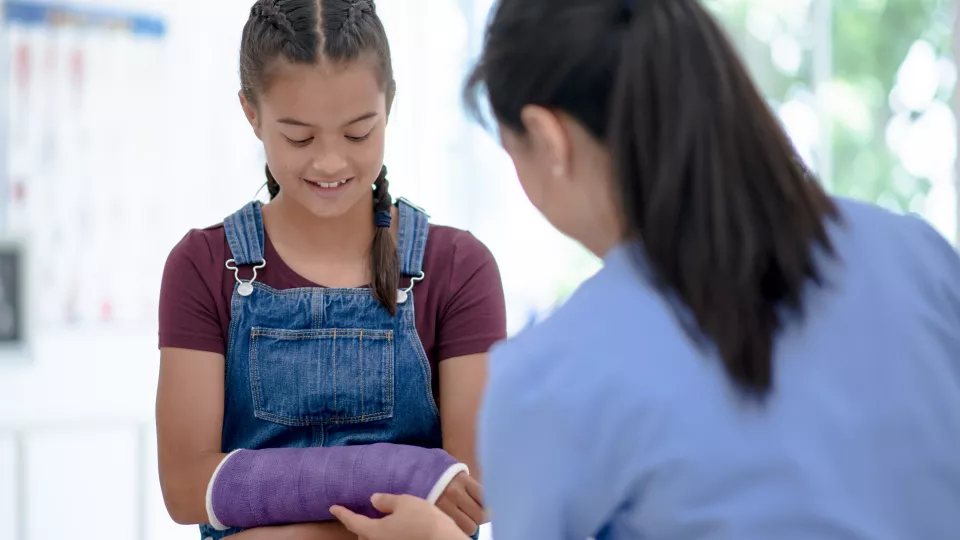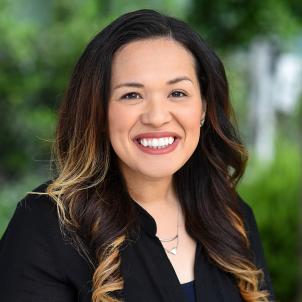
Everything Parents Should Know About Fractures (and a little more)
Broken bones are a rite of passage of rough-and-tumble childhood. They occur so often with kids that some parents may think the injury is no big deal, since kids are resilient, dusting themselves off after every spill. But a potential broken bone, no matter how unaffected your child might seem, is not to be ignored and requires immediate medical attention.
We spoke to Jasmine Gasca, MPAP, PA-C, a physician assistant at the Jackie and Gene Autry Orthopedic Center at Children’s Hospital Los Angeles, to gather the essential information parents need to know about a broken bone.
Is it a fracture or a sprain?

Fracture is the medical profession’s way of saying "broken bone," Gasca explains. A fracture generally results when an excessive amount of force is placed on a bone, causing it to break or crack. This can occur in one instance or through repetitive trauma to the region over time.
Sprains happen when ligaments get stretched or torn; ligaments attach bones to other bones to support joints. "Most sprains heal well when diagnosed early and managed appropriately with rest and rehabilitation," Gasca says.
Although sprains do happen with children, they are more likely to sustain fractures. It is especially important for kids to be evaluated by a pediatric specialist for fractures due to the presence of growth plates (areas of the bones that facilitate growth and are more susceptible to injury).
Signs and symptoms
- Pain or discomfort
- Tenderness to touch
- Difficulty with movement
- Difficulty with weight-bearing
- Swelling
- Discoloration
- Deformity
Treatment do's and don'ts
"Fractures require an X-ray to determine whether a bone break has occurred, and if so, what type," Gasca says. Emergency rooms and hospitals have access to radiology lab settings 24 hours a day. Based on the type of fracture identified, the doctor will determine the best course of treatment, including immobilizing the injured region via a cast, brace, or splint to keep the bone aligned and allow for proper healing.
Rest and maintaining a healthy diet are crucial to maximizing your child's recovery from a fracture. "Bones need to be provided with the proper nutrients," Gasca says. (See below for dietary tips.) In addition, your doctor may suggest physical therapy after the fracture has healed to help improve your child’s strength and range of motion.
Conversely, Gasca warns, waiting too long to treat a fracture could result in complications and jeopardize your child’s recovery. "Important nerves and blood vessels may be injured and could be permanently damaged if a displaced bone is not fixed," she says.
Jasmine Gasca, MPAP, PA-CImportant nerves and blood vessels may be injured and could be permanently damaged if a displaced bone is not fixed.
Another risk she notes is malunion, which occurs when the bones are not aligned correctly. This can cause the patient to lose complete movement or experience deformity.
Gasca says a greater threat is "compartment syndrome," which is the compression of blood vessels, nerves, and muscle inside a closed space, or compartment, within the body. It's very painful and can lead to serious injury and, in extreme cases, amputation or death.
How can you prevent them?
Gasca says the best way to prevent fractures is to have strong, healthy bones. "The body needs essential nutrients, like calcium and vitamin D." She says you can find them in these foods:
- Dairy products: milk, yogurt, cheese, eggs
- Whole grains: brown rice, cereal, oats
- Vegetables: broccoli, dark leafy greens
- Beans: chickpeas, black beans, tofu
- Alternatives: almonds, soy
Exercising, which promotes strong muscles and strong bones and enhances balance and coordination, is also key.
Lastly, Gasca advises having your child wear proper protection while playing sports. She cites as an example wearing wrist guards while skateboarding, snowboarding, or roller blading to decrease the potential for a wrist fracture.
Ultimately, kids are going to play too rough and occasionally fall too hard, which on rare occasions will cause a fracture. "Preventive steps," Gasca says, "are the best action a parent can take."
Bonus! Three Facts About Broken Arms
- Ratio of boys to girls: Fractured arms are twice as common in boys as in girls.
- Age: Fractured arms are most common in kids 5 to 9, as the joints are loose at this age.
- Open fractures: Open fractures (injuries in which a broken bone breaks through the skin) are rare. Mostly they occur from a direct fall onto an outstretched hand.


